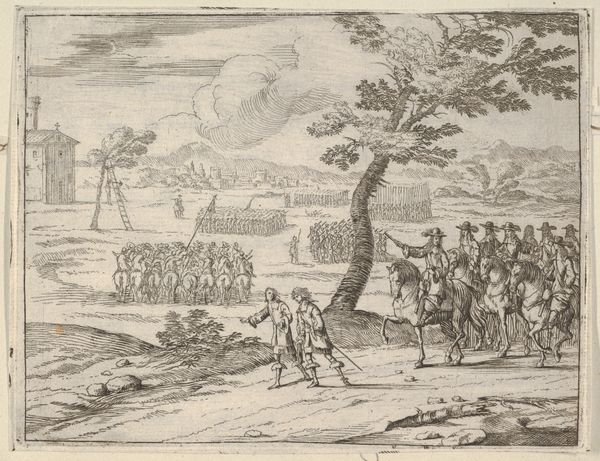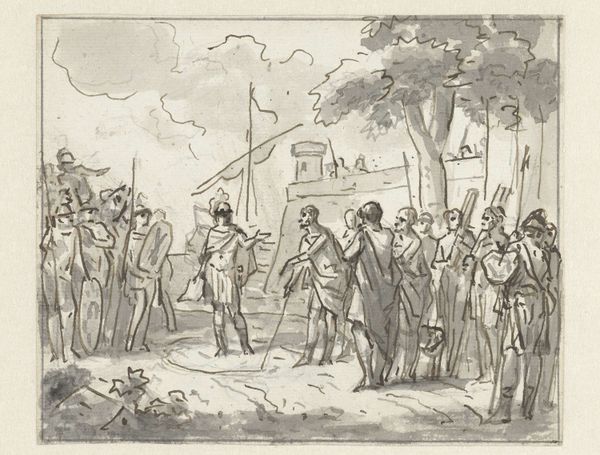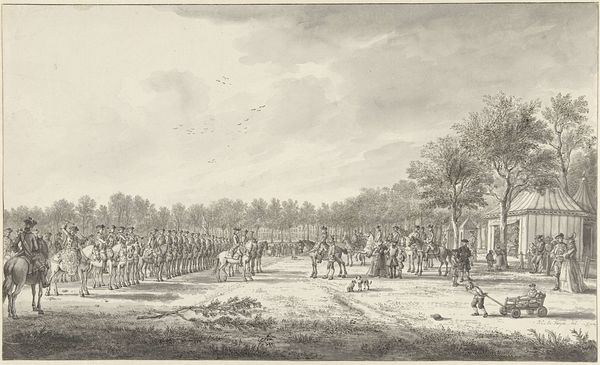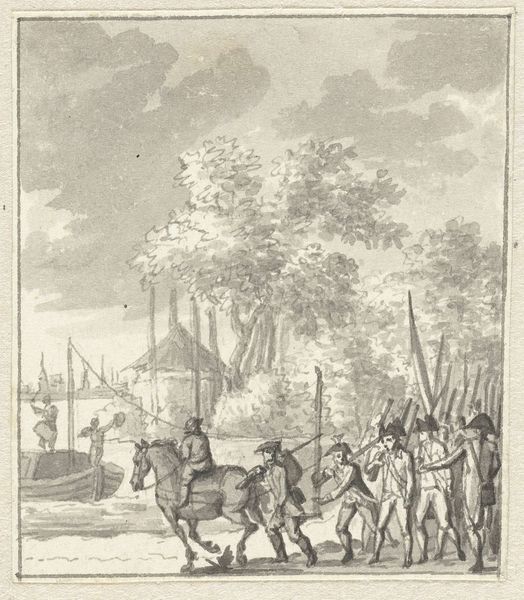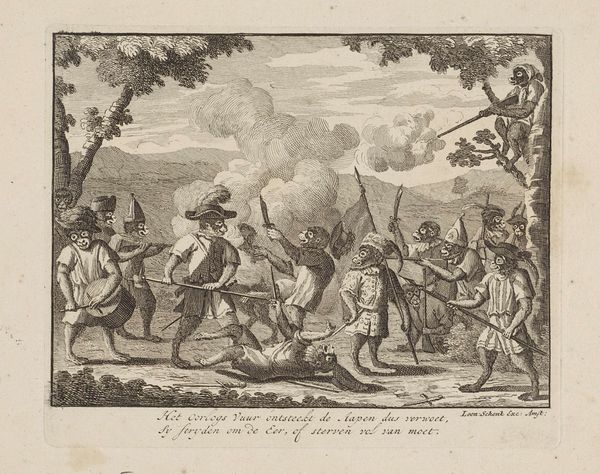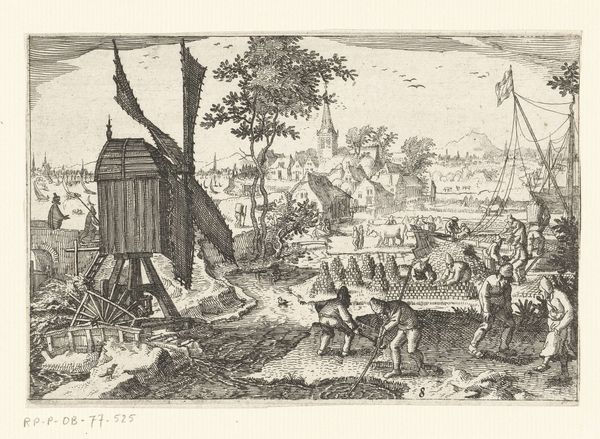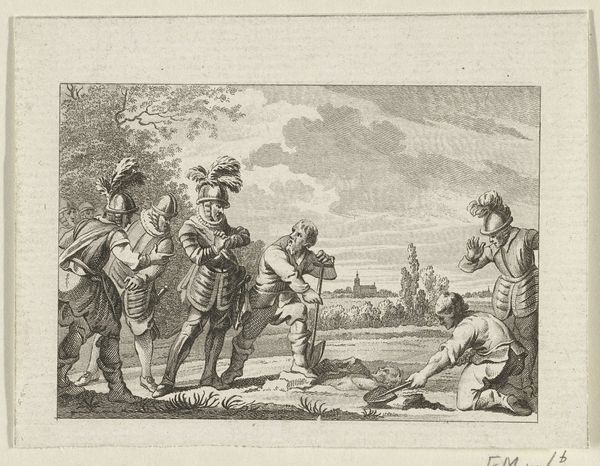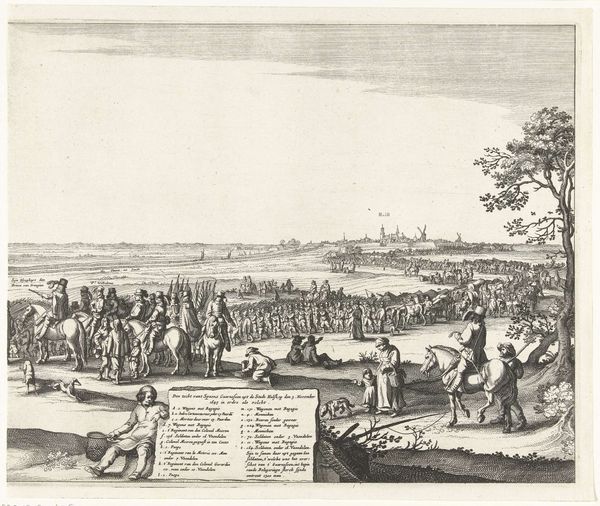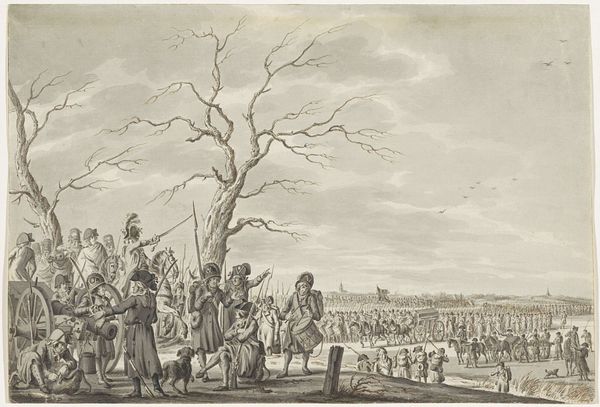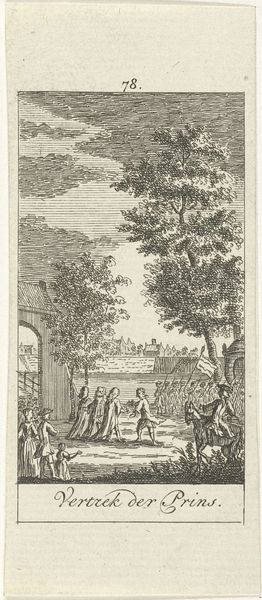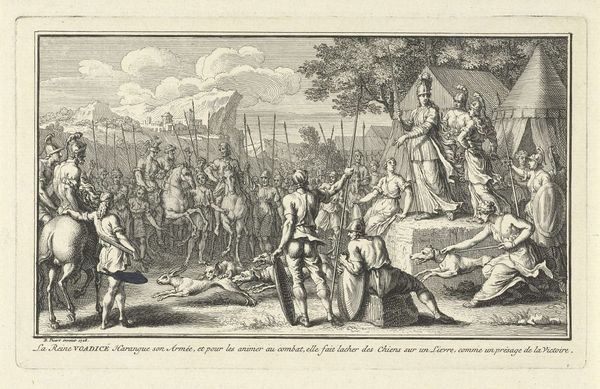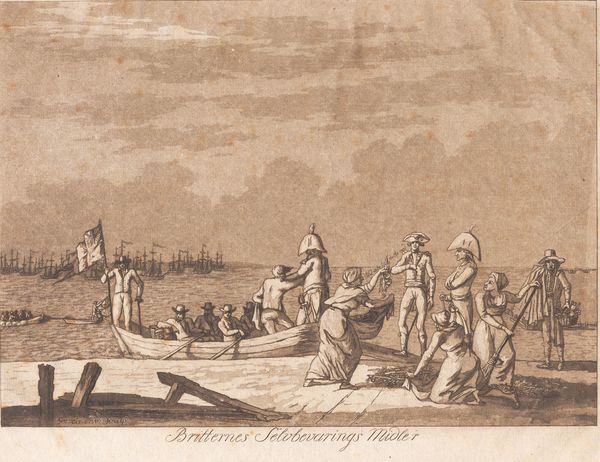
drawing, print, engraving
#
drawing
# print
#
landscape
#
history-painting
#
engraving
Dimensions: height 306 mm, width 461 mm
Copyright: Rijks Museum: Open Domain
Editor: This is "Aanval van de Pruisische troepen op Weesp, 30 september 1787" by Maas van Altena, made between 1789 and 1791. It's an engraving, giving it this intricate, almost journalistic feel. It looks so precise. How would you interpret this work through the lens of its creation and distribution? Curator: Let’s think about the printmaking process itself. Engraving involves laborious, skilled handwork. Lines are etched, acid-bitten, then inked and printed. This mechanical reproduction, far from diminishing its artistic value, democratized access to this specific visual narrative. Editor: So, you're saying the medium itself speaks to a wider audience and accessibility? Curator: Precisely! Who do you think this print was intended for? Consider its function. Was it commissioned propaganda, a commercial venture for mass consumption, or something else? The means of production inherently link the artwork to the socio-political climate. This wasn't some lone artist in an ivory tower. There’s an entire industry at play, impacting the visibility and interpretation of the depicted attack. Also consider that paper was made of linen rag at this time... What labor created the raw materials? Editor: That really changes how I see it. It’s not just a picture of a battle, but evidence of economic systems, skill sets, and historical dissemination methods. Curator: Absolutely. It compels us to examine the unseen labor embedded within the image, extending our understanding of 18th-century Dutch society. We tend to view the content of a drawing; but a print requires an engagement in its creation, its multiple reproductions, its materials. It becomes an historical artefact beyond its content. Editor: It’s fascinating to consider the ripple effects of materials and techniques! It makes this print feel more connected to a bigger web of human activity. Curator: Indeed. Focusing on production unveils deeper layers of meaning. The artist is then only one agent in this historical image.
Comments
No comments
Be the first to comment and join the conversation on the ultimate creative platform.
